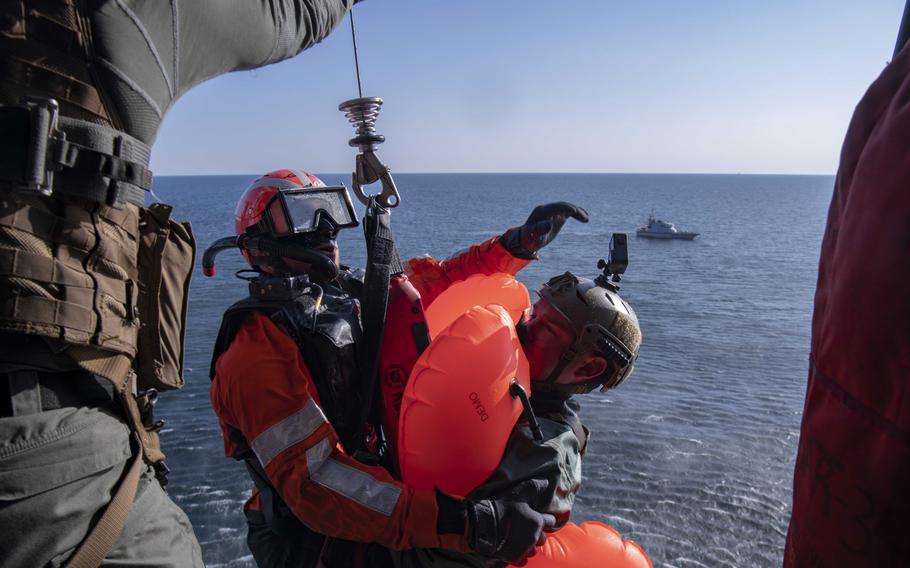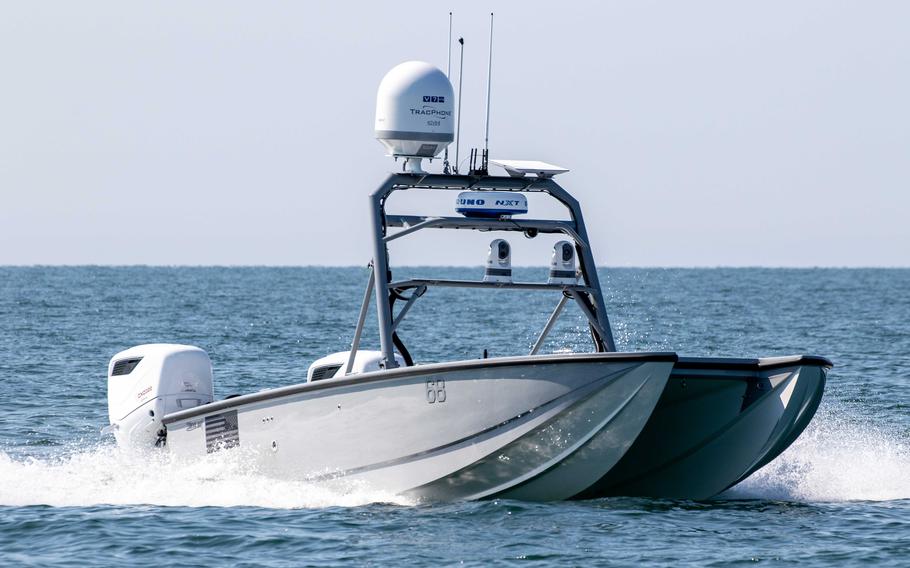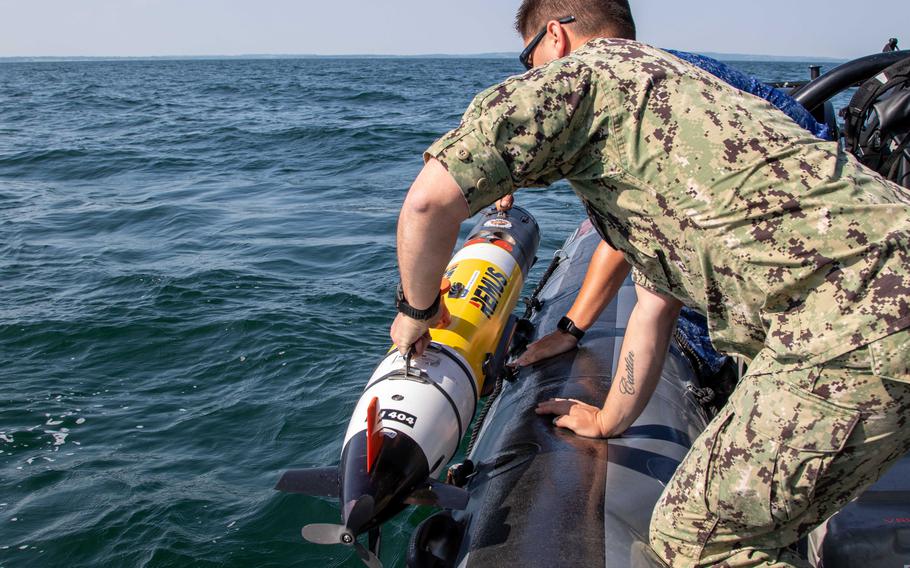
A U.S. Navy helicopter from USS Mount Whitney conducts recovery exercises with U.K. sailors in the Baltic Sea, June 7, 2023, during exercise Baltic Operations 2023. Sailors are also testing unmanned boats and drones that may reduce risk during rescues at sea. (U.S. Navy)
NAPLES, Italy — The U.S. Navy in Europe is experimenting with using ready-made, inexpensive unmanned boats to help rescue sailors, a method officials say will limit the risk inherent in many search-and-rescue operations at sea.
A commercial, remote-controlled speedboat was used to test the rescue of a pilot at sea for the first time as a part of the annual U.S.-led international sea exercise BALTOPS, U.S. Naval Forces Europe-Africa/U.S. 6th Fleet said in a statement Wednesday.
The two-week exercise, which included the U.S., Britain, Estonia, Finland, Germany, Latvia, Turkey and 13 other countries, ended Friday.
Using an unmanned surface vehicle, or drone boat, would allow the fleet to act quickly while eliminating the need to put more people and assets in harm’s way, especially in poor weather conditions or during combat, Joe Klein, the personnel recovery program manager for NAVEUR-AF, said in the statement.

Sailors test an unmanned surface vehicle during Baltic Operations 2023 in the in the Baltic Sea. The U.S. Navy tests unmanned sea vessels for potential use in personnel rescue and recovery operations. (Jan Eenling/U.S. Navy)
"The military in general is working on building a capability to recover aviators who go down in high-threat areas, where we’ve been denied access … the (unmanned surface vehicle) is a possible solution to that dilemma,” Klein said.
In adverse conditions, a failed rescue operation can compound a tragedy. For example, seven Romanian service members on a search and rescue mission for a downed pilot were killed in March 2022 when their helicopter crashed near the Black Sea.
The drone boat also could be used in other scenarios, such as rescuing an overboard sailor, according to its Florida-based manufacturer, MARTAC Systems.
Drones are still far from replacing highly trained search and rescue teams in many situations.

Sailors and Marines, seen here in an undated file photo, experiment with an unmanned underwater vehicle during BALTOPS 23. The multinational exercise, led by U.S. Naval Forces Europe-Africa, allows navies to test new technology. (Jan Eenling/U.S. Navy)
But for less complicated rescues, the boat can be programmed to go directly to a pilot, who would climb aboard from a life raft before being evacuated. In situations involving multiple pilots, their life rafts could be hooked onto the drone boat, the company said.
Use of the remote-controlled rescue boat highlights the experimental capacity of BALTOPS, which this year included testing surface, underwater and aerial drones.
Navy and allied forces also used a surface boat to launch a small, unmanned sub that scanned for potential mines. Such searches normally expose the crew of a rigid hull inflatable boat to potential death or injury, the Navy said.
That innovation and adaptation, along with exercise scenarios and interaction with allies, ultimately informs strategy in Europe, said Maj. Gen. Daniel Lasica, director of strategy, plans and policy for U.S. European Command.
A review of the exercise’s new ideas “feeds into how we think about modifying those plans, adjusting strategy, moving forward as well,” Lasica said.
If the Navy chooses, it shouldn’t take long to incorporate the unmanned naval vehicles tested during BALTOPS into the theater of operations, MARTAC representatives said.
The company didn’t say how much the 24-foot boat used in the rescue scenario cost. But the boat, which has a top speed of 58 mph and a range of up to 500 nautical miles, is significantly less expensive than a manned boat and crew, a MARTAC representative said.
A similar 38-foot boat in production will have a top speed of 69-92 mph and a range of up to 1,200 nautical miles at cruising speed. A version of that boat is being tested by U.S. 5th Fleet in Bahrain, according to MARTAC.
“It’s technology that is available today,” said Karl Van Duesen, a retired Navy officer and senior vice president for MARTAC. “They don’t have to wait for another year or two or five years of research and development work.”
bath.alison@stripes.com Twitter: @alisonbath_